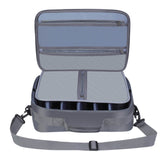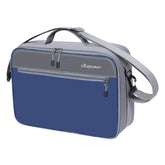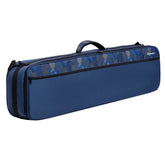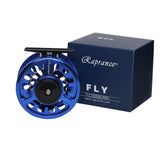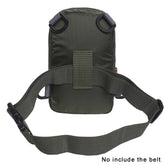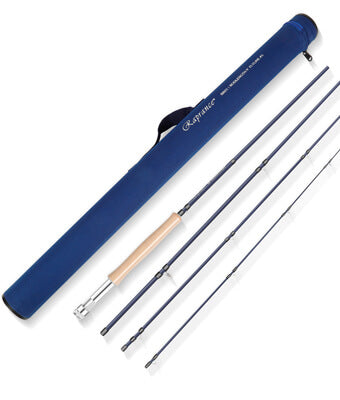Fly Fishing Flies: Essential Patterns for Every Angler's Tackle Box
Fly Fishing Flies: Essential Patterns for Every Angler's Tackle Box
When it comes to fly fishing, the choice of flies is crucial to a successful outing. The right fly can significantly increase your chances of attracting fish, as different patterns mimic various insects and bait. Understanding which flies to use based on the season, location, and the fish species can transform an average fishing trip into a memorable experience.

I’ve spent countless hours experimenting with different types of flies, from dry flies that float on the surface to nymphs that sink below it. Each style serves a specific purpose and can be effective under various conditions. By familiarizing myself with the best practices for selecting and using these flies, I’ve improved my technique and overall enjoyment of the sport.
Whether you’re a seasoned angler or just starting, mastering the art of choosing the right flies is essential. I hope to share insights that can enhance your fly fishing adventures, making every cast more rewarding and exciting.
History and Evolution of Fly Fishing Flies
The history and evolution of fly fishing flies showcase a fascinating journey through time. From their ancient origins to modern innovations, these tools have transformed the practice of fly fishing, appealing to enthusiasts and professionals alike.
Ancient Beginnings
The roots of fly fishing trace back to ancient civilizations. I find it intriguing that the earliest documentation dates to 200 AD in China, where fishermen used artificial flies made of feathers and silk to catch fish. Similarly, ancient Roman texts describe the use of insect imitations for fishing. In Europe, the 15th century saw the emergence of the first written references to fly fishing in England, with simple designs crafted from natural materials.
Modern Developments
With the advent of the Industrial Revolution, fly fishing materials and techniques underwent significant changes. The introduction of synthetic materials expanded the range of flies available. I appreciate how companies like Umpqua have pioneered advancements, producing flies that mimic aquatic insects with remarkable accuracy. The use of modern tools, such as vises and specialized threads, has allowed for more intricate designs. Furthermore, the popularity of catch-and-release fishing has influenced fly patterns, promoting the creation of flies that are both effective and eco-friendly.
Prominent Fly Producers
Several companies have shaped the contemporary fly fishing landscape. Umpqua, for instance, is renowned for its high-quality flies that have been meticulously crafted. Their collaboration with skilled tiers results in innovative patterns that address diverse fishing conditions. Other notable producers include Orvis and Scientific Anglers, each contributing unique fly designs and materials to the market. I value how these manufacturers offer a blend of tradition and innovation, catering to both novice and experienced anglers.
The evolution of fly fishing flies continues as trends shift, keeping the sport dynamic and engaging.
Types of Fly Fishing Flies
Fly fishing flies come in various types, each designed for specific fishing conditions and species. I find understanding these categories crucial for effective fishing. Here are the main types I often use: Dry Flies, Wet Flies, Nymphs, Streamers, Midges, and Stimulators. Each serves a unique purpose and mimics different aquatic insects or bait.
Dry Flies
Dry flies float on the water's surface, imitating adult insects. I typically use them during a hatch when fish are feeding on insects above the surface. A few popular examples include the Elk Hair Caddis and Adams patterns.
Key Features:
- Design: High-floating with buoyant materials like foam or hair.
- Usage: Best during emergent insect activity.
- Technique: A delicate presentation is crucial.
Wet Flies
Wet flies are designed to be fished beneath the water's surface, imitating drowned insects or aquatic life. I often use them when fish are less interested in surface feeding. Popular examples include the Woolly Bugger and Soft Hackle patterns.
Key Features:
- Design: Often look like larvae or pupae.
- Usage: Effective when fish are deep or not rising.
- Technique: Retrieve technique can vary from slow to fast, depending on conditions.
Nymphs
Nymphs represent the immature stages of insects that live underwater. I find them essential for targeting fish during various phases of the aquatic life cycle. Popular patterns include Pheasant Tail and Hare’s Ear.
Key Features:
- Design: Typically heavy to sink quickly.
- Usage: Used when fish are feeding subsurface.
- Technique: Dead-drifting can yield great results.
Streamers
Streamers imitate larger prey such as baitfish or minnows. I often use them to entice aggressive fish species like trout and bass. Common patterns include the Clouser Minnow and Muddler Minnow.
Key Features:
- Design: Streamlined and often colorful.
- Usage: Suitable for active fish or during low-light conditions.
- Technique: A stripping retrieve works well to mimic movement.
Midges
Midges are small flies that represent tiny insect species prevalent in many water bodies. I often rely on midge patterns during colder months or when fish are particularly selective. Examples include the Black Beauty and Zebra Midge.
Key Features:
- Design: Tiny and delicate, often fished in a size #20 or smaller.
- Usage: Effective during hatches or when fish seem finicky.
- Technique: Subtle presentation is essential.
Stimulators
Stimulators are buoyant flies that mimic various insects and can be used as attractors. I find them versatile for both dry and nymph presentations. Common patterns include the Stimulator and Hi-Vis version.
Key Features:
- Design: Large and colorful to draw attention.
- Usage: Effective for both surface and subsurface fishing.
- Technique: I often use them as a lead fly in a dry-dropper rig.
Understanding these types helps me select the right fly for various fishing situations. Each type plays a unique role in attracting fish, enhancing my overall success on the water.
Fly Selection Strategies
Selecting the right flies is crucial for a successful fishing experience. I focus on matching the local insect life, understanding fish behavior, and adapting to seasonal changes and water conditions. My strategy incorporates these elements to improve my chances of catching fish, particularly trout.
Matching the Hatch
Matching the hatch is about choosing flies that mimic the insects currently available to fish. I observe the water and its surroundings to identify what insects are hatching. Common hatches include mayflies, caddisflies, and stoneflies.
To increase my success, I often:
- ** Analyze the size:** I use a size chart to select flies that closely correspond to the natural insect size.
- ** Observe colors:** Matching the color of the hatch can significantly affect how enticing my flies appear to fish.
- ** Consider behavior:** Not only the appearance but also the behavior of the natural insects matters. Duns, spinners, and adults might demand different fly presentations.
Seasonal Variations
Different seasons affect insect life and, subsequently, fish feeding patterns. I adjust my fly selection based on the time of year to increase my odds of success.
- Spring: In spring, mayfly hatches tend to dominate. I often use nymphs and emergers in cooler waters.
- Summer: During summer months, terrestrial insects like ants and grasshoppers become vital. I prefer dry flies that imitate these creatures.
- Fall: As temperatures drop in fall, baitfish imitation becomes more critical. I tend to use streamers that mimic smaller fish.
- Winter: In winter, fish metabolism slows down. I opt for smaller flies and nymph patterns that sink to the bottom.
Fish Behavior
Understanding fish behavior is key for effective fly selection. I pay attention to how trout respond to their environment, as this informs my choices.
- Feeding time: I often fish during dawn and dusk when trout are more active and likely to feed.
- Water column: Fish behavior changes with the time of day and light conditions. I adjust my flies to target various water columns—using dry flies on the surface or nymphs deeper down.
- Pressure: In heavily fished areas, I may choose less common fly patterns or adjust my presentation to entice wary fish.
Water Conditions
The water's condition plays a significant role in fly selection. I constantly assess factors like clarity, temperature, and flow rate.
- Clarity: In clear water, I opt for more natural colors and smaller flies. In murky conditions, brighter and larger patterns can be more effective.
- Temperature: Warmer water encourages more surface activity, shifting my focus to dries. In colder water, I switch to nymphs or streamers.
- Flow rate: Fast-moving water often requires heavier flies to ensure they reach the fish. Conversely, in slow water, I use lighter flies with a more delicate presentation.
By considering these strategies, I enhance my fly selection and increase my chances of a successful fishing trip.
Tackling Techniques for Fly Fishing

In fly fishing, selecting the right technique is critical to success. Each method has unique applications and gear preferences, significantly influencing the likelihood of making a catch.
Dry Fly Fishing Techniques
When using dry flies, my goal is to create a natural presentation on the water’s surface. The key is to match the hatch, ensuring the fly imitates the local insect life. I usually focus on the following:
- Casting: A gentle cast helps prevent spooking fish. I aim for a drag-free drift to make the fly appear lifelike.
- Visibility: Light-colored flies work well in bright conditions. In contrast, darker ones might be more effective during low-light situations.
- Hook-up: I practice quick hook-ups as fish often strike with confidence and slack line can lead to misses. A firm yet smooth pull at the right moment is essential.
Nymphing Techniques
Nymphing often produces results when fish are feeding below the surface. For effective nymphing, I employ these strategies:
- Strike Indicator: I use a visible indicator to detect subtle bites. It is crucial to keep an eye on it, as nymph strikes can be gentle.
- Depth Adjustment: Adjusting how deep my nymphs drift is vital. I might add split shot to reach the desired depth quickly.
- Line Control: Maintaining contact with the nymph is important to feel for any bites. I often incorporate techniques like “high-sticking” to keep my line as straight as possible.
Streamer Tactics
Using streamers allows me to target larger fish actively. This technique imitates fleeing baitfish or other aquatic creatures. To enhance my streamer fishing, I focus on these aspects:
- Retrieve Techniques: Varying my retrieve speed can trigger different reactions from fish. I often alternate between fast retrieves and slow strips for effectiveness.
- Water Column Fishing: I’ll often cast and let the streamer sink to various depths, covering more water. This helps locate active fish.
- Hook-up Strategy: Setting the hook with a firm strip can ensure that fish get securely hooked, given the often aggressive nature of strikes.
By honing these techniques, I can improve my fly fishing success and increase my catch rate significantly.
Choosing the Right Equipment

Selecting the right equipment is crucial for successful fly fishing. The choice of rods, reels, and accessories greatly impacts casting effectiveness and the overall experience.
Fly Fishing Rods
When choosing a fly fishing rod, I evaluate the length and weight based on the type of fishing I plan to do. Rods typically range from 7 to 10 feet, with shorter rods suited for tight spaces and longer ones ideal for open water.
The weight of the rod, matched to the line I use, influences casting distance and presentation; a 5-6 weight rod works well for trout, while heavier rods are better for larger species.
Material matters too; graphite rods are lightweight and responsive, while fiberglass offers better flexibility. I consider my experience level, budget, and intended target species when making my selection.
Reels and Lines
Choosing the right reel involves matching it to my rod and line weight. I prefer a smooth drag system to ensure better hook-up rates when battling fish.
You have options between manual and automatic reels. Manual reels offer greater control, while automatic reels provide convenience.
Fly lines are categorized by weight and taper style. A weight-forward line helps achieve longer casts, while a double taper line excels in delicate presentations. I always ensure my line is suitable for the conditions I expect to encounter.
Fly Fishing Gear and Accessories
Key accessories enhance my fly fishing experience. I rely on a quality fly box to keep my flies organized. Having a range of patterns on hand is essential for adapting to fish moods and local conditions.
Waders are another must-have, allowing me to stay dry while wading into the water. I choose breathable materials for comfort during longer outings.
Other useful items include landing nets, forceps for quick hook removals, and tippets for line connections. Each accessory plays a part in ensuring my fishing trip is successful and enjoyable.

